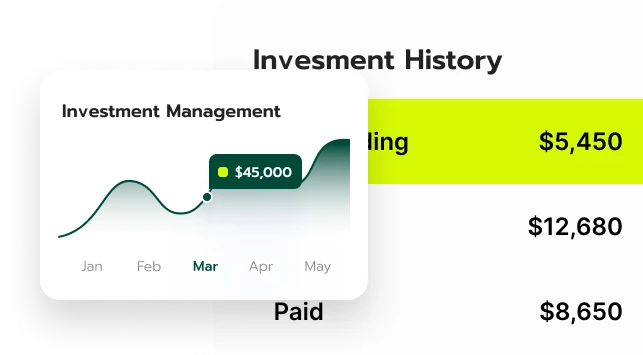Klar Corevia is a website that helps people seeking investment education. The website assigns investment education firms to users. Anyone can use Klar Corevia regardless of prior investing experience.
The Klar Corevia website only serves as a link between investment teachers and learners. That is, it does not provide investment teaching services. After connection, learners will start to discover the meaning of investment on a deeper level, understand the risks involved, strategies for mitigating those risks, and key terminologies.
Connecting with investment tutors on Klar Corevia is easy and free. People ready to connect and begin learning should click the sign-up button to access the registration form. The form requests their names, emails, and phone numbers. Once signed up, representatives from the investment teaching companies will contact and guide them on the next steps.

Access basic and advanced investment knowledge from suitable teachers through Klar Corevia. Get insights into investment techniques, expanded knowledge, and financial wisdom. Register on Klar Corevia to begin learning.
Klar Corevia connects all categories of people to investment tutors, regardless of their level of expertise.
The website also caters to the needs of those with pre-existing investment knowledge seeking to build on it and become vast. Start building on existing knowledge by signing up on Klar Corevia.
Klar Corevia allows people to find investment tutors easily. There’s no need to surf the internet in search of courses to learn how to invest. We’ve done the legwork.
Klar Corevia has partnered with investment education companies. Intending learners only need to sign up on the website to connect with them.

Registering on Klar Corevia to connect with investment education firms is free. All that is required from people to sign up are their names, emails, and phone numbers.
On Klar Corevia, language is no barrier. Connect with and learn from suitable tutors in any language. Klar Corevia is a global solution.
With a button click, anyone can be on their way to learning about investments. The education firms converse with the user to determine a personalized approach for their learning.
Investment is an asset preserved for sale and possible gains if it appreciates. In other words, investment is the money put into an asset for a period to make a return.
Despite its capacity to yield gains, it may result in loss due to risks. Investments and risks are inseparable. Some of these risks include liquidity, credit, and reinvestment risks. To learn more about investment and related risks from investment educators, register on Klar Corevia.

A portfolio can be affected by risks, whether handled by a professional investor or not. These risks often stem from market conditions.
The good news is that while risks cannot be ruled out, they can be managed through certain strategies. Some of the risks are highlighted below:
Liquidity risk is the impossibility of converting an asset into money, thereby being unable to settle certain financial obligations. The two major types of this risk are funding and market liquidity risks. Funding liquidity risk is the inability to obtain enough funds to meet financial debts. On the other hand, market liquidity risk is the inability to perform financial transactions because of market disruptions.
Credit risk arises from a borrower’s default of paying back a loan, causing the lender to lose money. The four major credit risk types are credit spread, fraud, concentration, and default risk. Learn more about these risks by registering on Klar Corevia and connecting with investment education firms.
Political Risk
Political risk is the risk that an investment value could depreciate due to negative political decisions or government change.
Interest Rate Risk
Interest rate risk is the risk of an investment not performing as expected due to its fluctuating interest rate.
Concentration Risk
Concentration risk occurs when there is a financial loss because of investing in a single asset (instead of many).
Types of concentration risks include sector, name, geographic, and credit. Sector concentration risk is associated with investing in one sector. There is concentration risk when a portfolio has a single asset. Geographic concentration risk affects investments that focus on a particular location. Credit concentration risk occurs when an investor works with one borrower or a group.
Country risk is the risk of assets owned in other countries losing value due to social, political, and economic factors. The types of country risk are transfer, exchange, neighborhood, expropriation, and sovereign. Country risk assessment can help decision-making when investing in a foreign country. Register on Klar Corevia to learn more from investment education companies.

Investment policies define the conditions surrounding investing funds. The policies also dictate the investment risk tolerance, objectives, and portfolio management methods. The structure of an investment policy includes investment scope and objectives, roles and responsibilities of investment officials, authorized investments, and diversification.
Other parts of investment policies are authorized brokers, risk and performance standards, and reporting standards. The scope and objectives of investments state the investment types the policies apply to. Diversification involves creating a group of assets in a portfolio to meet set objectives and tackle risks. This could be a mixture of certificates of deposit, bonds, and treasury bills. Investment policies also outline parties (such as brokers, financial institutions, and depositories) that are involved in the financial scene.
This information is recorded in a document called investment policy statement (IPS). Format types for structuring an IPS are primary and supporting documents, individual documents for each portfolio, and primary policy for all portfolios. Get detailed information from investment educators by signing up on Klar Corevia.
Concentration risks exist as a result of two major factors - overconfidence and lack of diversification. An investor’s overconfidence may cause them to invest in a single asset, sector, industry, or country without minding the risks attached. The lack of diversification is when a person fails to invest in different assets, geographic locations, or sectors to mitigate possible risks.
Methods for determining concentration risks include portfolio analytics and concentration ratios. Portfolio analytics assess risks and stress-test a portfolio to see areas of possible risks. Concentration ratios (the Herfindahl-Hirschman Index and the Gini coefficient) help investors decide strategies to mitigate possible losses. Below, we examine the sub-types of country risks (as they relate to concentration risks):
Transfer risk affects investments when a host government fails or cannot approve foreign currency transfers in its country. In this case, it will be impossible to liquidate an asset. Connect with investment tutors on Klar Corevia to throw more light on this.
Neighborhood risk occurs due to issues arising in the neighboring country of the country a person’s investment is in. This risk can be caused by strategic allies, trading partners, and geographic neighbors. Learn more by signing up on Klar Corevia.
Economic risks are caused by a country’s inability to fulfill its financial obligations. These could be because of tax instability or poor economic growth. These issues might lead to recession or currency devaluation, affecting asset value. Learn more via Klar Corevia.
This risk is due to fluctuating exchange rates. Interest rates and inflation contribute to this risk. This risk may be mitigated through hedging. Learn hedging and other possible measures for guarding against all country risk types by signing up on Klar Corevia.
Investments are numerous but are in four categories: cash/cash equivalent, bond, stock, and alternative investments. Cash/cash equivalents are investments in money form or those similar to money. Examples are checking accounts, certificates of deposit, treasury bills, and commercial paper.
Bonds are fixed-income securities. Governments and large corporations use them to raise money. Stocks are a partial ownership of a company, representing access to its assets and earnings. Alternative investments fall outside the three other categories. Examples are commodities, arts, and real estate. Want to learn more? Register on Klar Corevia.
Commodities that fall under alternative investments include oil, wheat, gold, and agricultural products. In other words, commodities are tangible products for investment. Farmland is another alternative that blends tangible products (crops) and real estate.
Real estate investment involves investing in physical properties - residential homes, land - real estate mutual funds, real estate investment trusts (REITs), and real estate crowdfunding platforms.
Peer-to-peer lending is an alternative form of financing where investors give out loans to borrowers. These investors may make gains from loan interests. Yet, this investment type is subject to default risk. Learn more about alternative investments by signing up on Klar Corevia.
Investment fraud is a tricky practice used to dupe people of their money. These fraudsters often present themselves as gurus and promise their victims of high-yield interests. Types of investment fraud include advance fee fraud, Ponzi schemes, crypto scams, pyramid schemes, and affinity fraud. Discover how to identify investment fraud by registering on Klar Corevia.
Advance fee fraud involves asking investors to make upfront payments and promises unrealistic huge investment benefits.
A Ponzi scheme is a dubious investment plan where money is gathered from people who have been promised massive gains and zero risks. The money is used to pay new investors.
Cryptocurrency scam often occurs by luring investors with crypto gains, claiming to help with their investment needs, and eventually stealing their coins. Honeypot scams allow investors to purchase coins that cannot be transferred or sold afterwards.
Affinity fraud is an investment fraud targeted at a group of people. Fraudsters often position themselves as members of these religious, racial, or age groups to easily execute their fraudulent plans.
Pyramid scheme is a Ponzi scheme type where deceived investors recruit more investors to participate. The money from the first set of investors is used to pay the new ones. The payment then stops later.
IPO scams are executed by people who pose as legitimate companies raising capital by offering shares to the public. Dig deeper into the topic of investment fraud by signing up on Klar Corevia.
The investment world is wide, with much to learn. Klar Corevia only shares a tiny fraction of investment topics. Investment education firms handle the comprehensive investment education process. When registered, people can share their areas of investment learning interests with their teachers, ask questions, and apply acquired knowledge to their lives. Click the sign-up button to start.

| 🤖 Registration Cost | Free |
| 💰 Fees | No Fees |
| 📋 Registration | Simple, quick |
| 📊 Education Focus | Cryptocurrencies, Forex, Mutual Funds, and Other Investments |
| 🌎 Supported Countries | Most countries Except USA |


